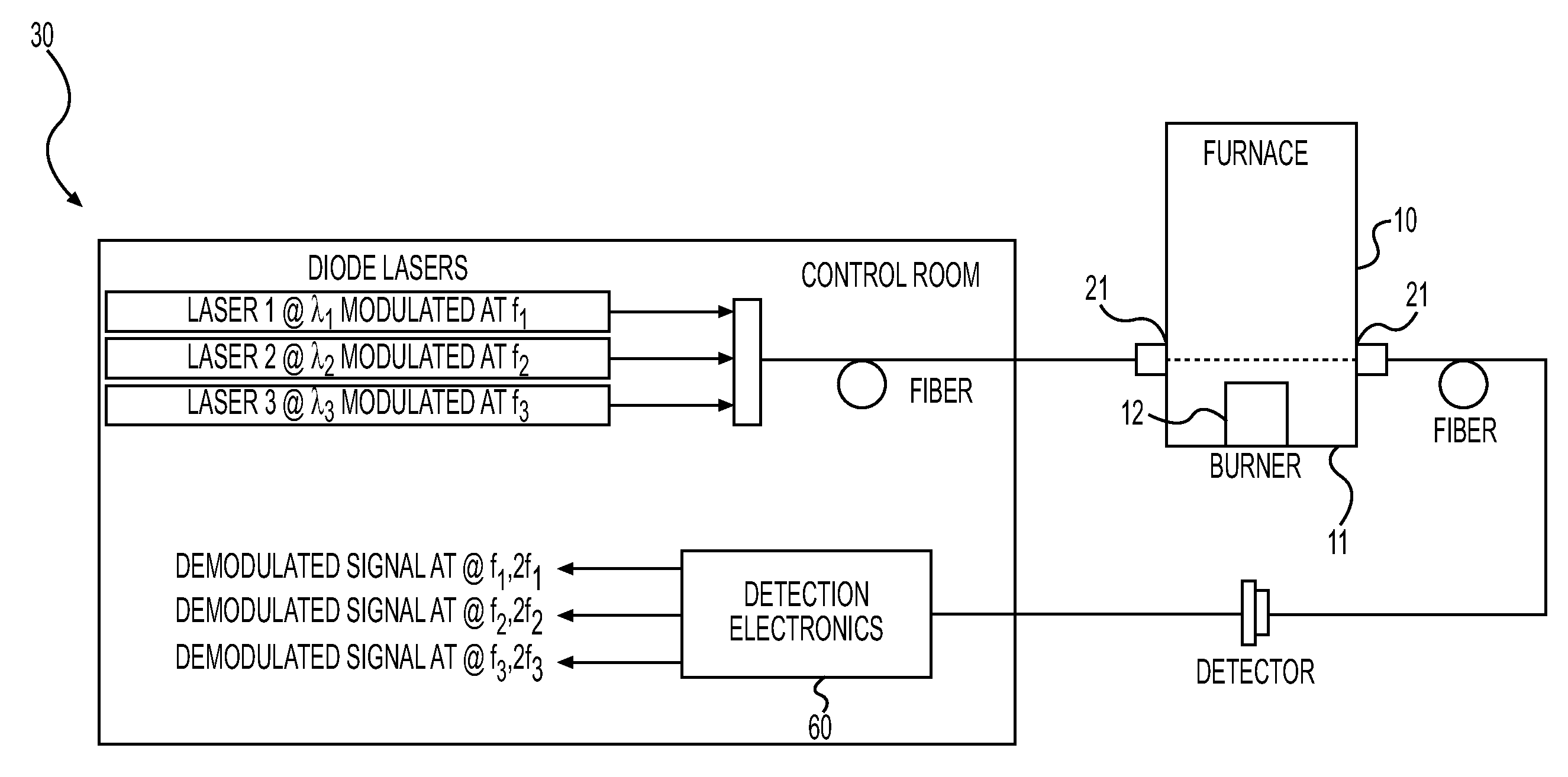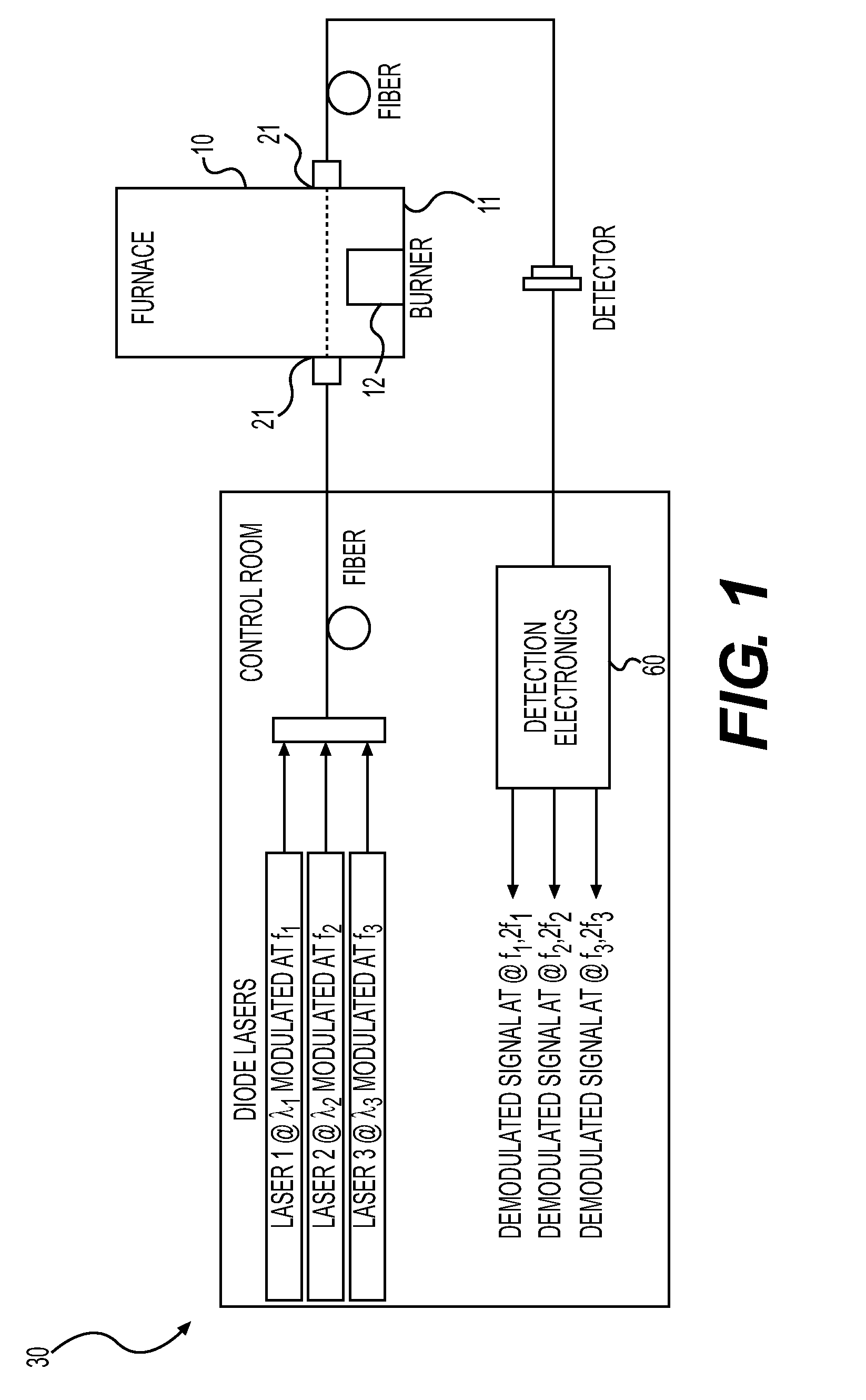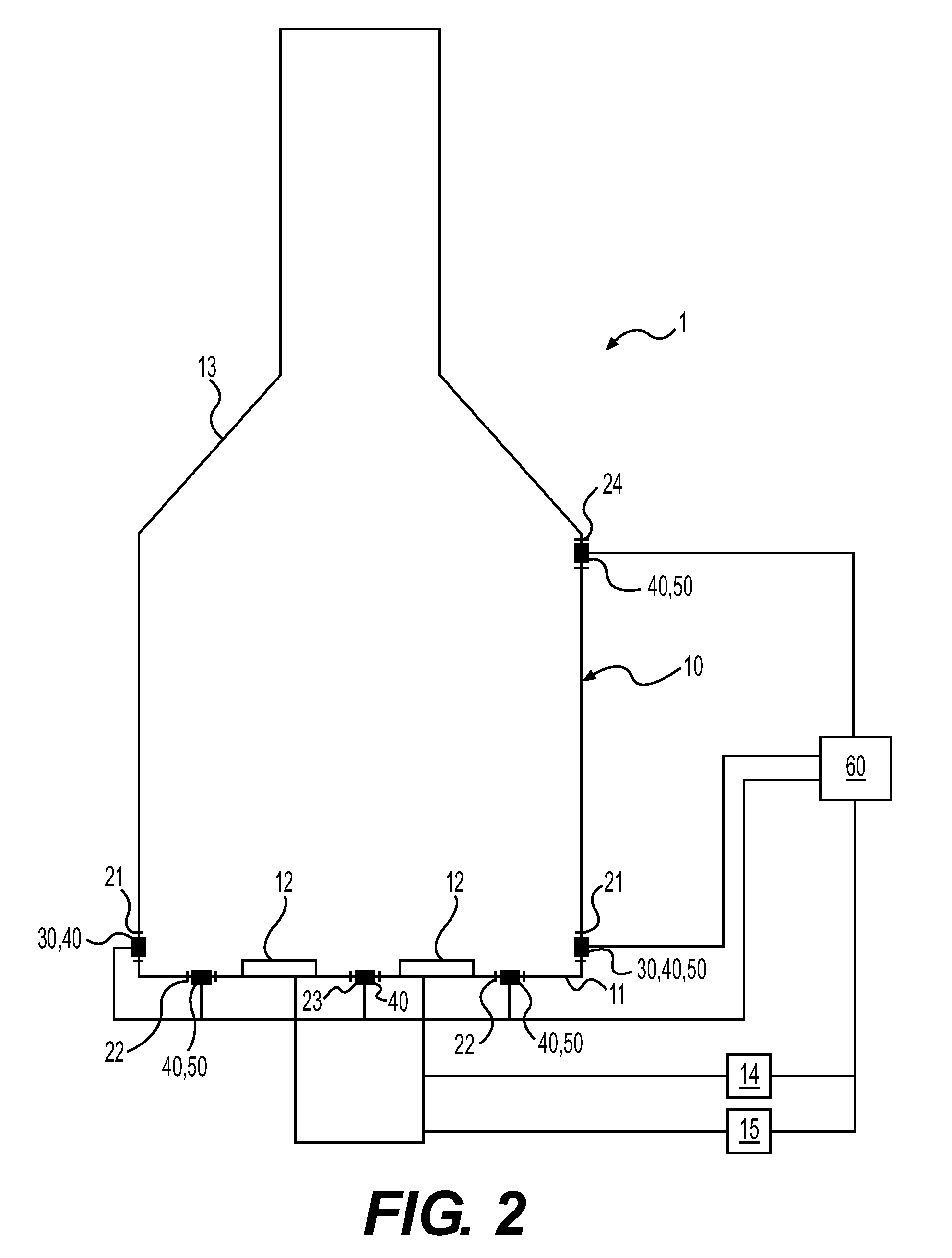System and method for controlling fired heater operations
a technology for controlling systems and heaters, applied in the direction of combustion regulation, solid fuel combustion, lighting and heating apparatus, etc., can solve problems such as unstable flames, dangerous operating conditions, and unstable flames, and achieve the effect of reducing nox emissions and safe operation
- Summary
- Abstract
- Description
- Claims
- Application Information
AI Technical Summary
Benefits of technology
Problems solved by technology
Method used
Image
Examples
example 1
[0072]Refinery gas (e.g., typically containing CH4, C3H8, H2 and CO2) and Tulsa natural gas was supplied to a single commercial grade Ultra Low NOx Burner at a firing rate of about 11 MBTU / hr and 7 MBTU / Hr for the refinery gas and 7 MBTU / hr for the Natural Gas. Flame stability was measured with a Wavelength-Multiplexed, Wavelength Modulated Tunable Diode Laser (TDL) Sensor based on the protocol set forth above. Carbon dioxide at ambient conditions was added to the fuel to simulate the addition of recycled combustion gas. During the tests, between 0 and 5000 SCFH (standard cubic feet per hour) of CO2 was added, as illustrated in FIG. 3. CO (ppm) and NOx (ppm) emissions were determined and the results are set forth in FIG. 3. The emissions were obtained from sensors located in the flue stack. As shown in FIG. 3, NOx emissions decreased as the amount of carbon dioxide is increased. 3-fold NOx reductions can be achieved upon addition of diluent.
[0073]Based on results from this example, ...
example 2
[0075]Refinery gas (e.g., typically containing CH4, C3H8, H2 and CO2) was supplied to a three commercial grade Ultra Low NOx Burners at a firing rate of about 6 MBTU / hr. Flame stability was measured with a set of five pressure sensors and a machine vision sensor system with one high-temperature furnace camera and thirteen analysis sections within the optical image. Computation of flame stability was the average and normalized variance of all measurements from each type of sensor, including a software-based high pass filter. Steam was added to the fuel to reduce measured NOx emissions until flame instability was detected. During the test, between 0 and 0.23 lbs of steam per lb of fuel was added. NOx (ppm) emissions were determined and the results are set forth in FIG. 5. The emissions were obtained from sensors located in the flue stack. As shown in FIG. 5, NOx emissions decreased as the amount of steam was increased. Two-fold NOx reductions was achieved during this test upon additio...
PUM
 Login to View More
Login to View More Abstract
Description
Claims
Application Information
 Login to View More
Login to View More - R&D
- Intellectual Property
- Life Sciences
- Materials
- Tech Scout
- Unparalleled Data Quality
- Higher Quality Content
- 60% Fewer Hallucinations
Browse by: Latest US Patents, China's latest patents, Technical Efficacy Thesaurus, Application Domain, Technology Topic, Popular Technical Reports.
© 2025 PatSnap. All rights reserved.Legal|Privacy policy|Modern Slavery Act Transparency Statement|Sitemap|About US| Contact US: help@patsnap.com



